In floriculture tropical plants are very popular, they are grown in greenhouses and presented at exhibitions. Many exotics have no special decorative value, but there are also bright representatives. Afelandra is appreciated not only for its beauty during the flowering period, the foliage of the plant will decorate the room at any time of the year.
In order to grow a healthy tropical plant at home, as in the photo below, it is important to provide appropriate care and a microclimate that is as close as possible to the usual for afelander. Decorativeity depends on the conditions of detention, to which the inhabitants of humid forests are very demanding.
Content
General characteristics of plants and species diversity
Afelandra is a perennial bush of the Acanthus family. Hailing from the humid, warm tropical forests of South America. In the natural environment it can reach two meters, both in height and in volume. But indoor plants of this species grow to a maximum of a meter. Appearance is quite remarkable: large leaves with a pointed tip have a smooth glossy structure and a contrasting light pattern on a dark green plate.
For this feature, the flower is popularly called the "zebra plant." Refers to both decorative leafy and decorative blooming. Blooms with spike inflorescences up to two times a year with good care.
General view features
The tropical genus has more than 170 representatives, but only a very small part is domesticated. Species of the Acanthus family are easy to recognize without reference to the variety, since within the species they have common features:
- erect stem, which in some representatives may differ in reddish color or becomes arboreal with age;
- corrugated striped fleshy leaf, wide, lanceolate;
- small flowers and bright spiky bracts of orange, yellow or red shades;
- not all varieties can bear fruit, but all varieties die after it, so when the flowers begin to fade, they are cut immediately.
Protruding afelander
It is the most common variety in indoor cultivation due to its endurance to low temperatures in comparison with other species. Puffed Afelander native to Mexico. The size of the flower can reach one and a half meters in the natural environment, but in the apartment grow no more than 50-70 cm.
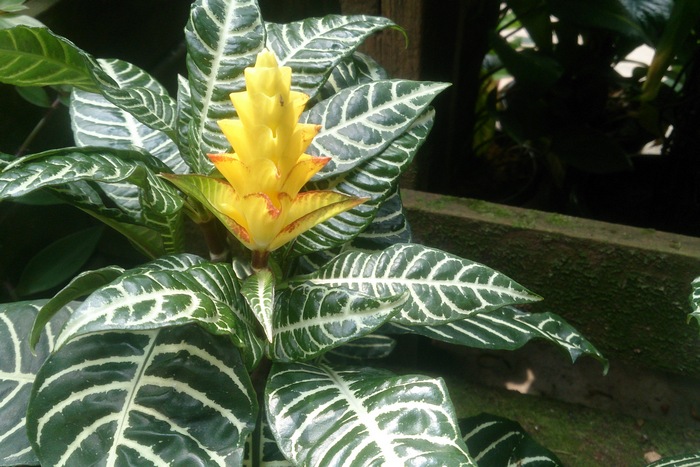
The stalk is bare, strong, has a reddish tint. The leaf plate is wide, dark green in color, with a glossy structure and a white outline. The shade of the back side of the sheet is lighter in color, so the pattern on it is less noticeable. Flowering period from June to November: blooms with a two-lipped yellow tubular flower. When the bud fades, a small fruit (up to 0.5 cm) appears, which has the shape of a box with seeds inside.
This species includes the following varieties:
- Dania - has bright white veins per leaf and variegated inflorescences.
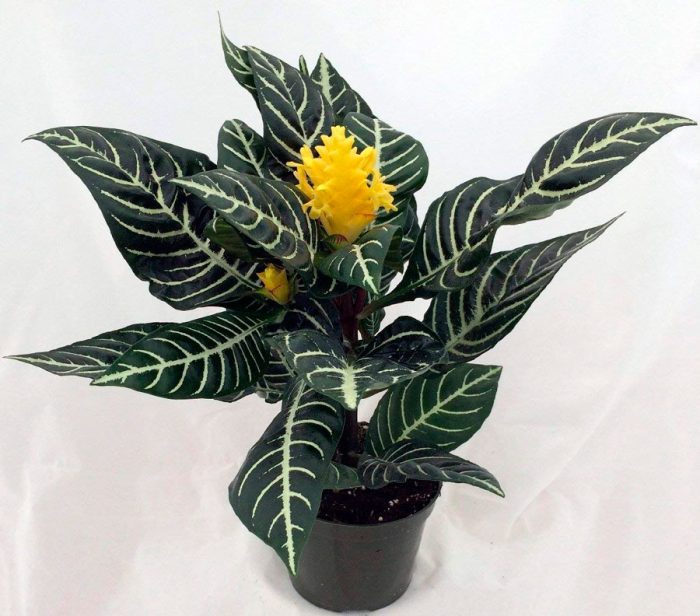
Dania - Louisae is distinguished by a reddish stalk and wide sinewy leaves.
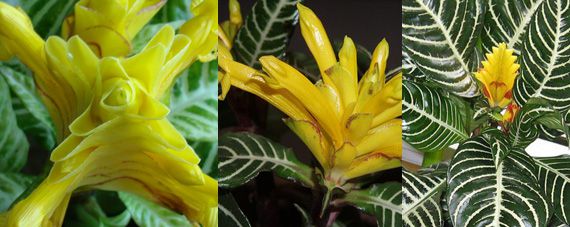
Louis - Leopoldi differs from other varieties in its orange flower.
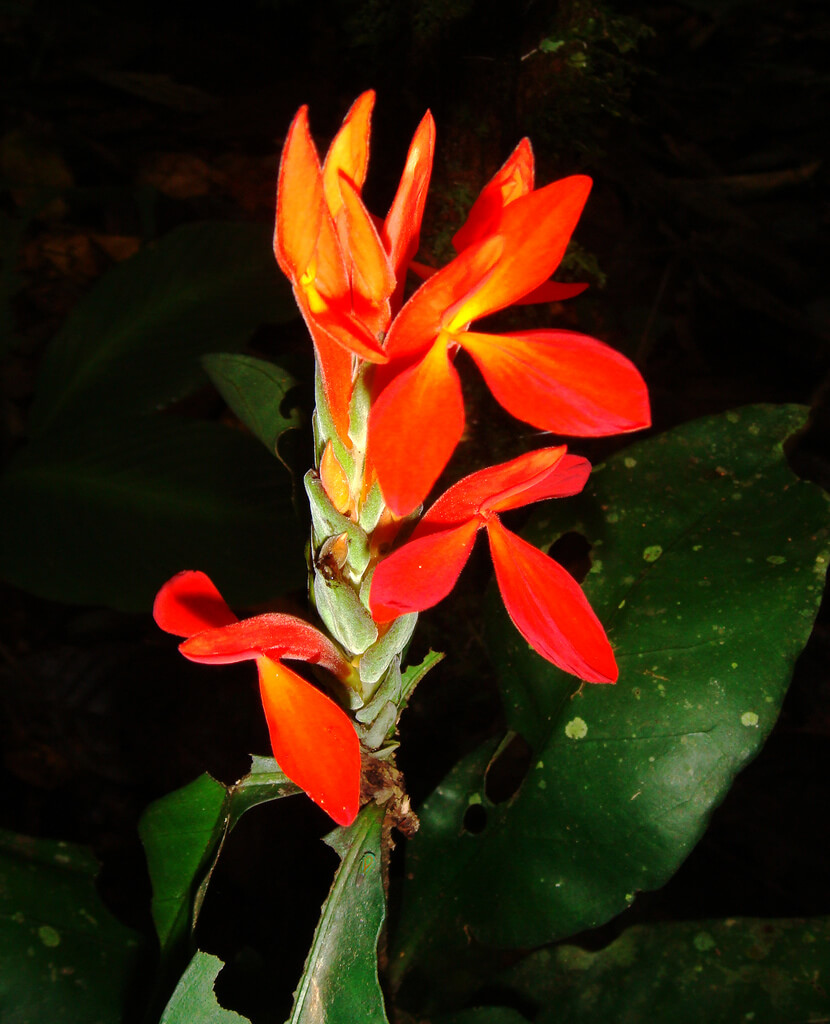
Leopoldi
Other varieties
Such varieties are less popular, but no less attractive:
- Squarrosa has large (up to 30 cm) leaves, on which silver-green streaks stand out. The buds are bright scarlet or orange. However, it blooms not very often. Flowering directly depends on long-term lighting.
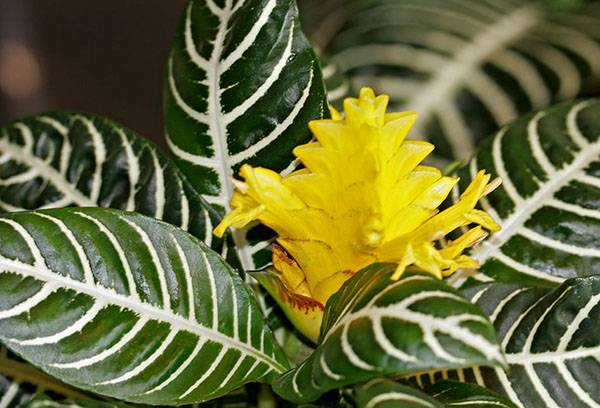
Squarrosa - Golden (orange) - bush with lignified reddish shoots. The leaf has an oval shape and a smooth green surface with a bronze tint, about 25 cm long. The flowers grow to a length of 15 cm and have an orange color, but the bud does not last long, no longer than 14 days.
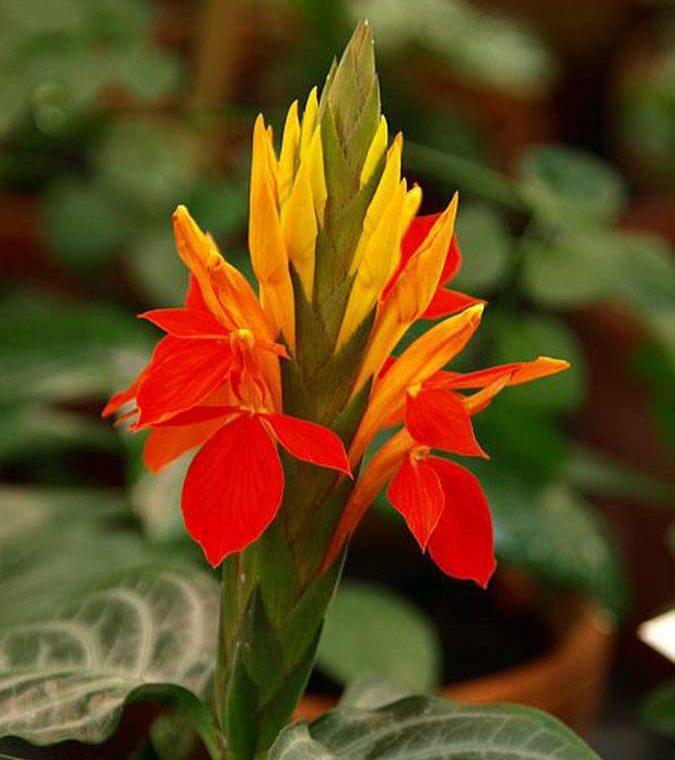
Afelandra Gold - Retzlä is a variety of Aurantiaca. The leaf is large, silver-white. Blooms no more than a week with orange-red inflorescences. Feature in light fruiting, which can be used for collecting seeds and further propagation.
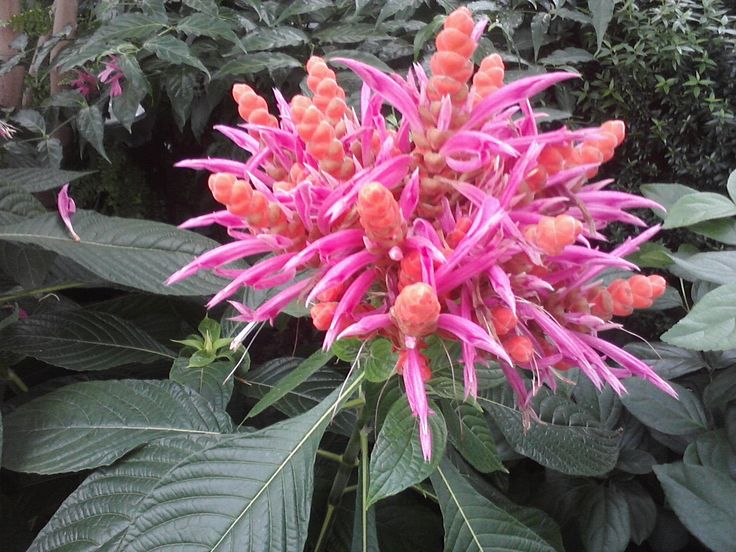
Retzl
Afelandra care at home, secrets and difficulties
A zebra plant can often be seen at many flower shows; with its original, memorable look, it attracts flower lovers who want to decorate the house with such an unusual specimen. However, very often after the purchase, inexperienced gardeners encounter problems in care, which are reflected in the appearance of a room variety.
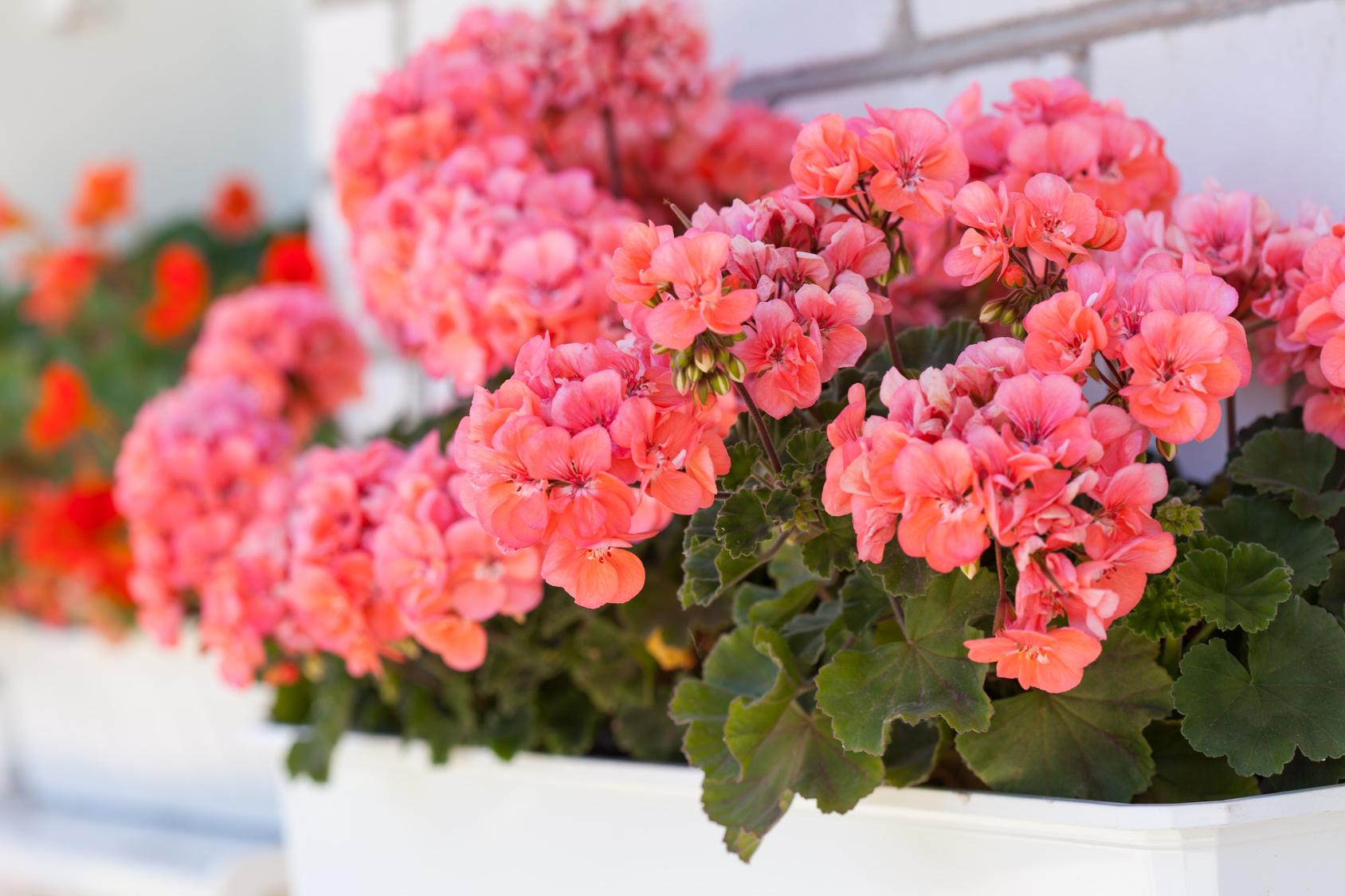 You may be interested in:
You may be interested in:The most common problems are:
- brown spots on leaves that indicate burns from direct sunlight;
- the brown dry edge of the leaf plate indicates a lack of moisture or mildew;
- leaf fall is the most common cause of care errors and is solved by regulating watering, selecting a comfortable temperature, nutrients and lighting.
Therefore, before acquiring a capricious culture, it is necessary to carefully study how to care for it.
Lighting
It is important to provide bright light, but without direct sunlight. For comfortable growth, it is best to adjust the pot on the west or east side of the room. Bright direct light will cause a leaf burn, therefore, taking the pot out to fresh air in the summer, you should put it in an openwork shadow.
In winter, daylight hours should be at least 8 hours, which cannot be achieved naturally. In this case, the right solution is to use phytolamps to gain the necessary dose of lighting. Particularly relevant is re-lighting in cloudy, rainy weather.
Temperature and humidity
The plant is thermophilic. A comfortable temperature range for it is 22-23 ° C. The maximum temperature without compromising the quality of life is 27 ° C, but only with good moisture. In winter, temperatures can drop to 15 ° C. The flower can withstand 13 ° C for no more than a week.
Humidity should be high, as in the conditions of natural growth. This issue is especially relevant in the winter due to heating appliances and in the summer due to hot days and air conditioners. You can increase humidity by installing a humidifier, decorative fountains, or simply water containers.
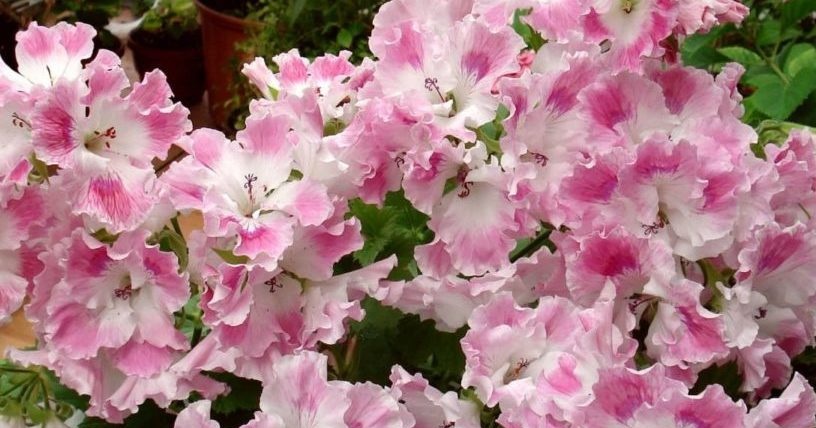 You may be interested in:
You may be interested in:Watering and feeding
Watering is carried out regularly and plentiful, warm soft water. In summer and spring, drying of the topsoil is not expected. But you need to ensure that the water does not stagnate in the pan.In winter and autumn, watering becomes less frequent, you should wait until the top layer of soil is slightly dry. But too dry earthen lump will lead to a quick withering of the flower.
Use preparations for flowering indoor plants, but the dose is halved. In winter, once a month is enough, subject to all other conditions of detention, especially the lighting regime.

Flowering Care
In an apartment, an afelander blooms from March to November, the exact period depends on the species. Flowering lasts from two weeks to two months. A drying bud must be removed immediately, since fruiting results in the death of the flower.
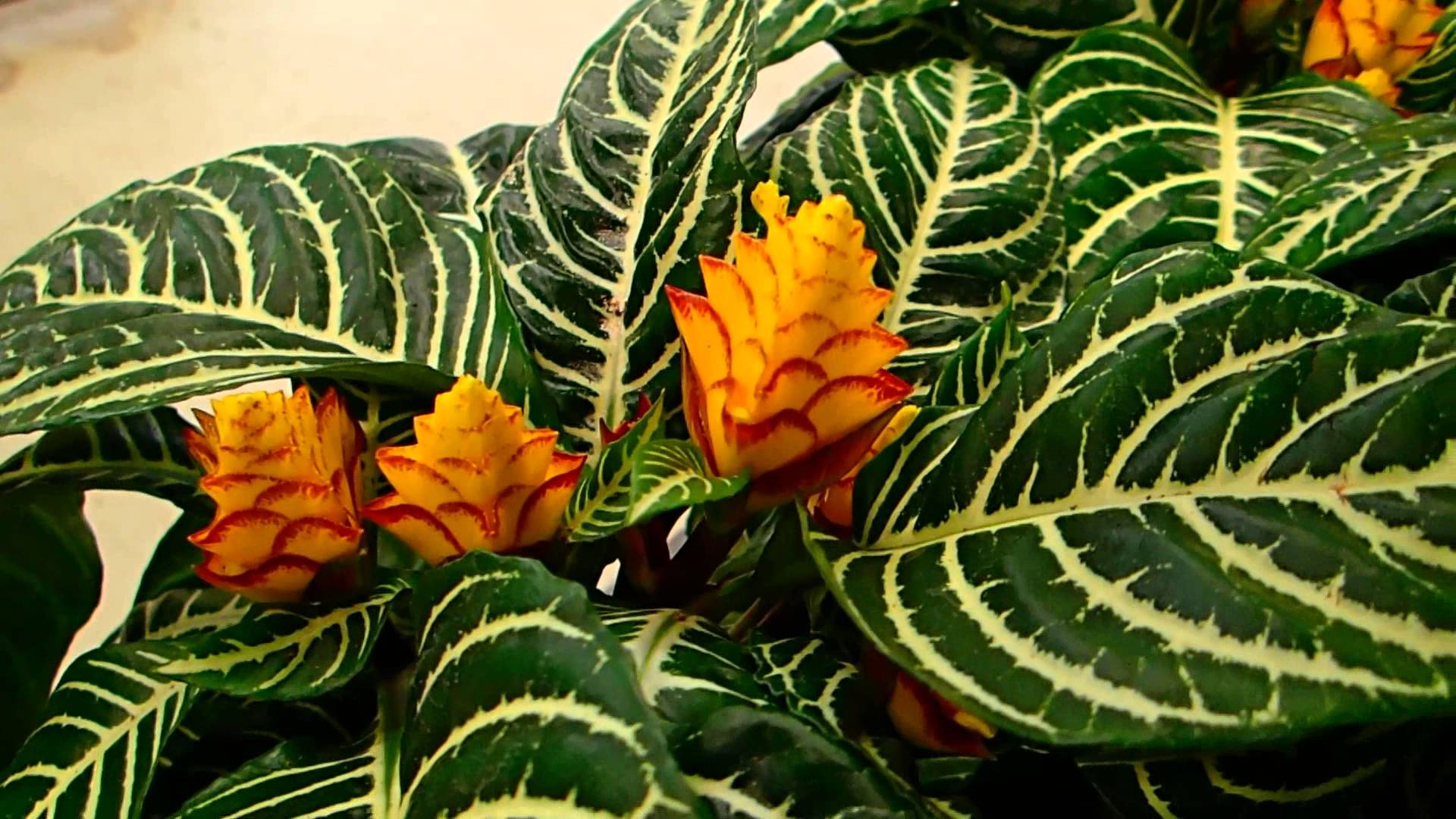
Watering is reduced, but not brought to a dry earthy coma. It is important that the plant has enough light at this time. Moreover, the intensity affects more than the duration. During the period of active flowering, it is necessary to ensure that the room temperature does not rise above 25 ° C. You also need regular spraying, but without moisture on the flowers.
Pruning and pinching
Afelandra is growing quite fast. To keep the shape beautiful and compact, pinch the growth cone of the flower. To rejuvenate an adult plant, use pruning. It can be carried out only after removing dry faded buds. It is important to prune correctly so that the bush does not lose its decorativeness, but rather is updated. A sharp secateurs are prepared, all shoots are cut, measuring so that the height of those remaining in the pot is about 25 cm.
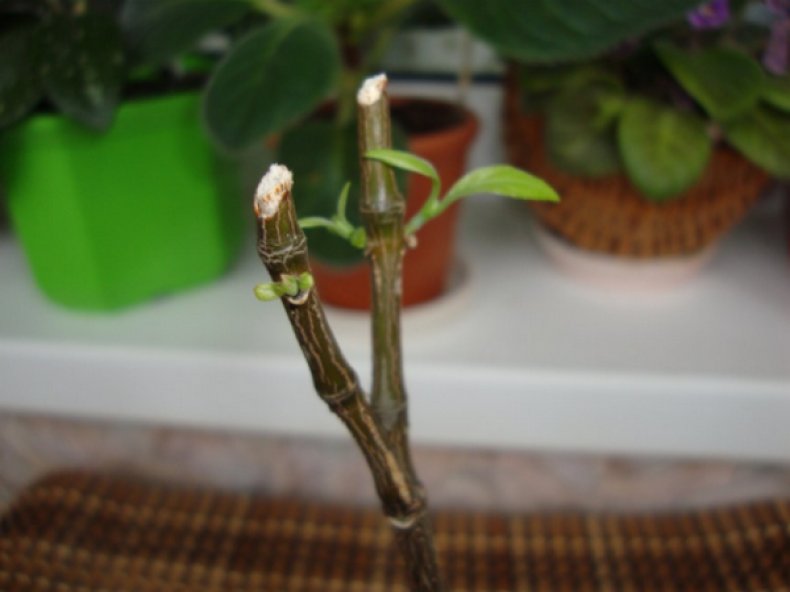
Proper care after cutting the shoots contributes to the rapid restoration of the plant. It is necessary to create a greenhouse (polyethylene is suitable for shelter), which must be ventilated, it is also important to spray the shoots daily.
Winter preparations
The dormancy period in an apartment near an aphelander begins immediately after flowering and is created artificially. The pot is rearranged in a cool place without drafts, the temperature is maintained at about 16 degrees.
Diseases and Pests
The plant is affected by such pests:
- Shield. In the first period of infection, it is not visible, later it is noticeable with brown plaques on the leaf and trunk. Leaves curl and fall. Before being treated with chemicals, mechanical cleaning with a soft cloth is necessary. Several interval treatments may be required, as the pest eggs are in the soil.
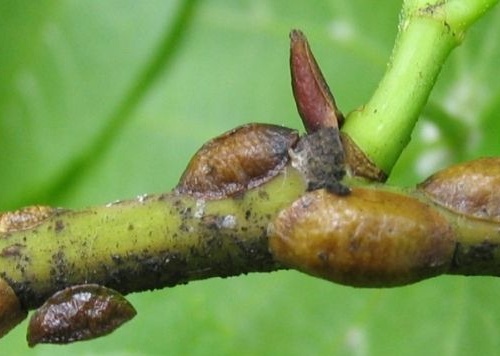
Shield - Mealybug. Easy to spot by white cotton coating. It is destroyed by insecticides, but before that it is necessary to wash the plant with soap and water.
- Aphid. On the flower you can see insects, the leaves are deformed, become sticky to the touch. They are treated with anti-aphid preparations or tinctures of herbs, garlic.
Also, root rot can affect indoor exotics. The reason for its appearance is increased soil moisture or stagnation of water in the pan. The treatment is carried out by removing rotten roots and replanting in a new soil with a good drainage layer.
Breeding
The flower propagates by seeds and cuttings:
- For seed cultivation, seeds are collected from the fruiting flower and immediately sown in the prepared substrate from a mixture of one part of sand and four parts of leafy soil. Be sure to create a greenhouse and maintain the temperature in it at least 25 ° C. The greenhouse is aired daily. Only when the seedlings are strong enough, it is transplanted into pots.
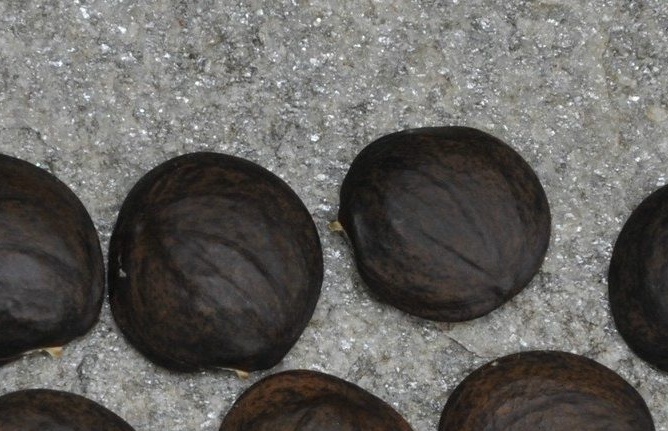
Afelander Seeds - Cuttings are a more common method, since it does not lead to the death of the mother bush. Cut the shoots in the spring, the length should be about 15 cm with the presence of two leaves. The stem is treated with root forming preparations and placed in a moist substrate. This method also needs a greenhouse, maintaining temperature and ambient light. Rooting lasts up to 2 months, after which the sprouts are transplanted into a permanent pot.
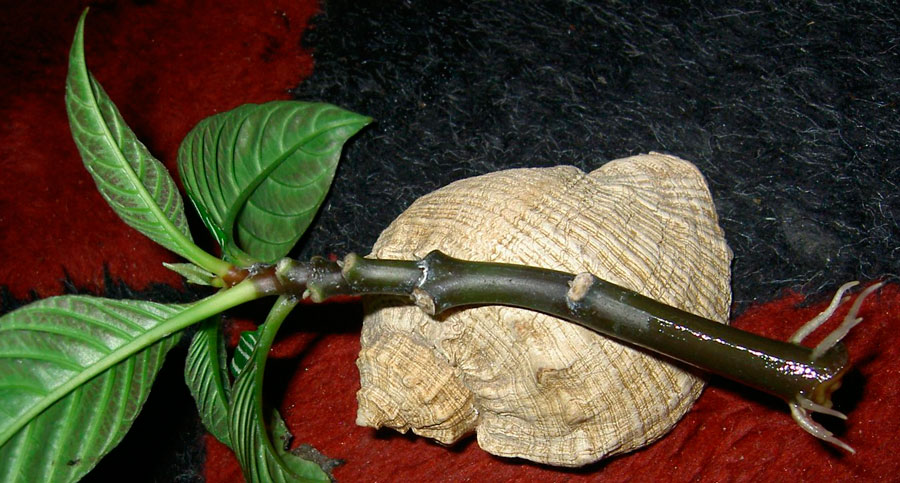
Propagation by cuttings
Houseplant transplant
In young plants, transplantation is carried out annually in the spring, and in adults once every couple of years. The soil is selected light, breathable. Before planting, it must be disinfected with steam, boiling water or calcined in the oven.
The transplant is carried out according to this algorithm:
- carefully remove the plant from the old pot, inspect the roots for rot and cut off all damaged areas with a sharp knife. Treat the cut points with carbon powder;
- ¼ the pot is filled with drainage, then 4 cm of soil;
- the plant is set so that the roots do not bend too much, and gently fall asleep with a mixture, completely covering the roots with earth;
- mulch the surface of the soil with expanded clay or pebbles, pour with warm, settled water.
The value of the Afelander flower in the house
Choosing greens to decorate the house, it makes sense to find out the meaning of the flower, as it may turn out to be unfavorable for the energy of a living room or simply poisonous. According to the teachings of Feng Shui, the variety of a plant is not as important as its condition and the personal emotions that it causes. So, it is believed that sick, withering flowers bring destructive energy to the house and can cause illness, quarrels and financial losses, so the health of the plant must be carefully monitored.
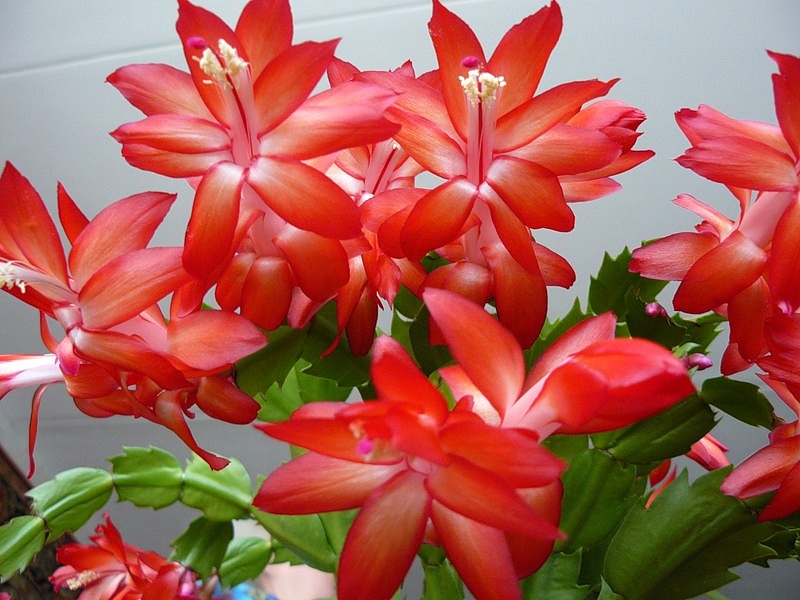 You may be interested in:
You may be interested in:Afelandra is welcomed in Taoist practice, as it has rounded leaves and shoots pointing upwards - this attracts positive energy to the house. It is better to install the pot in the eastern side, which carries the energy of the tree and is enhanced if you put live greens there.
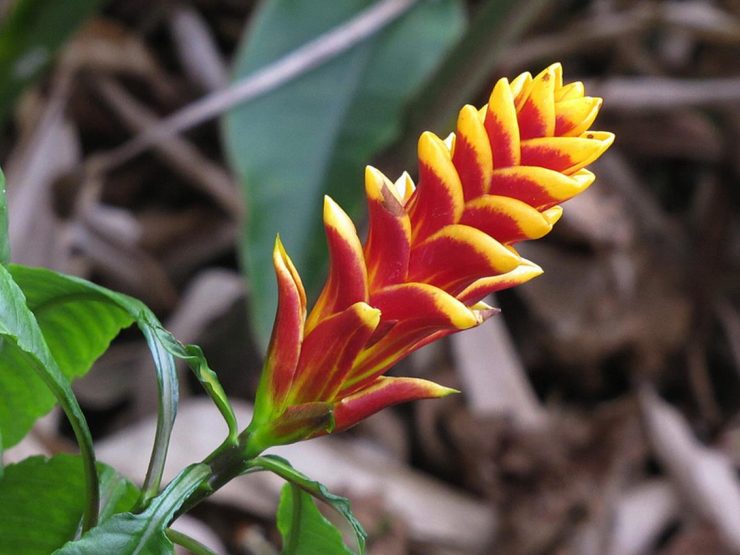
It is believed that those plants that correspond to the horoscope of family members have the greatest benefit. In this case, it is especially worth taking a closer look at this amazing exotism of lions: a flower is necessary for them to achieve emotional harmony, purify space and increase physical activity. Lions correspond only to beautifully flowering species, which, as a rule, are capricious in grooming, and this is Aphelandra.
It is considered a bad omen to give a flower in a pot, even such an unusual one, this portends the troubles of the person being presented. To accept a gift, but not to earn problems, it is recommended to give a coin in return, as if buying flowers.
Common Growing Questions
It’s now very easy to buy a tropical colorful plant in your house, because many varieties are adapted for growing in an apartment. A zebra plant will decorate any interior both in blooming form and with the help of its variegated leaves. But before purchasing it is important to prepare the conditions so that this unusual plant feels comfortable and delights not only with flowering, but also with bright, juicy greens, the decorativeness of which depends on lighting and humidity.

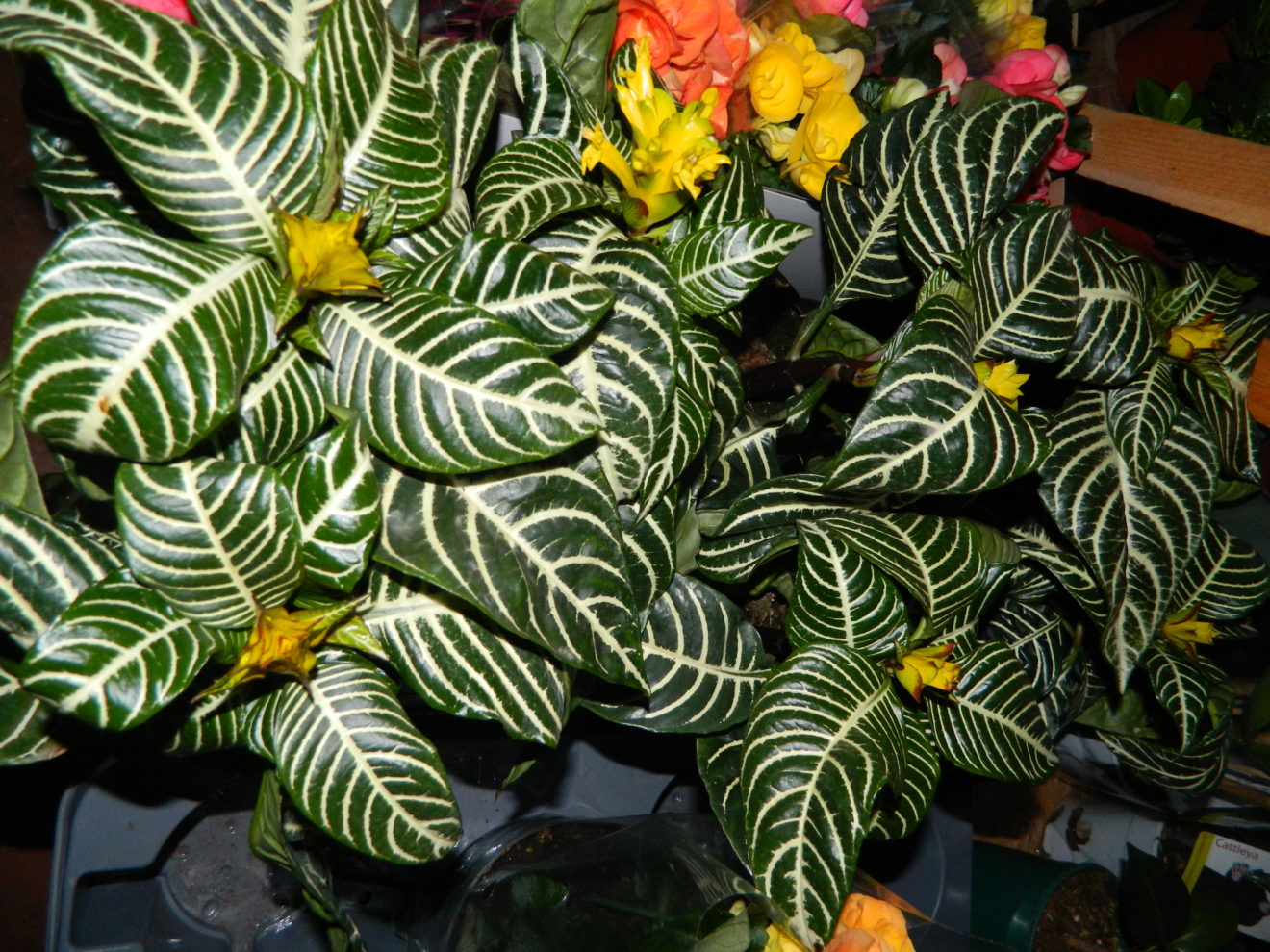
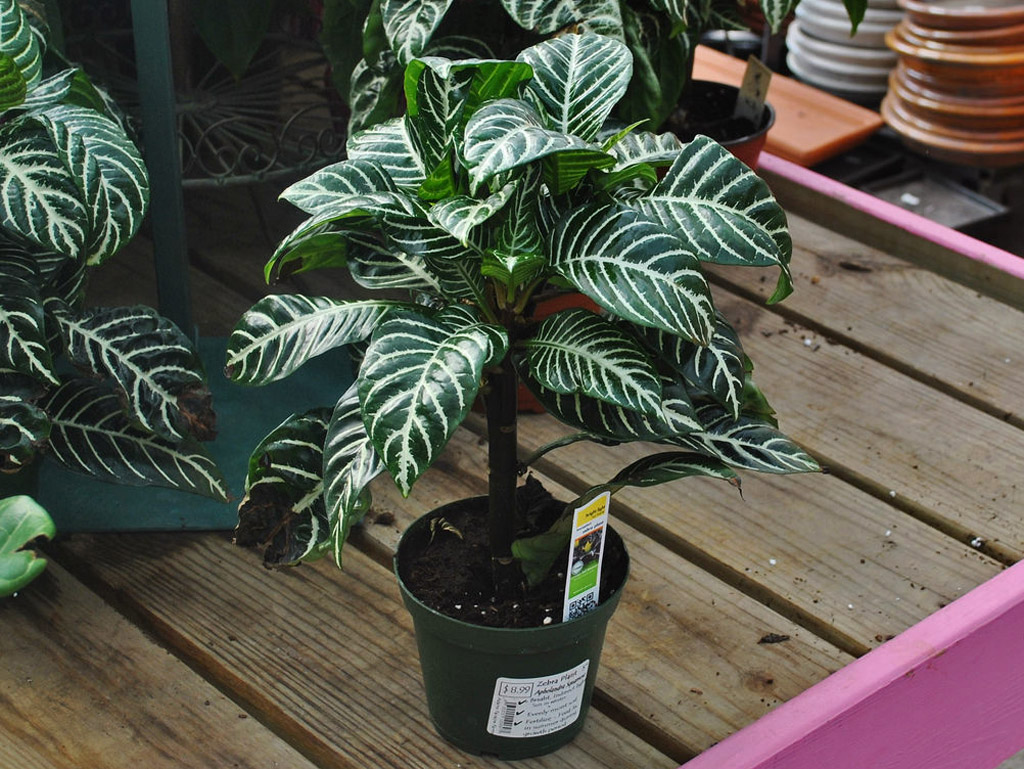
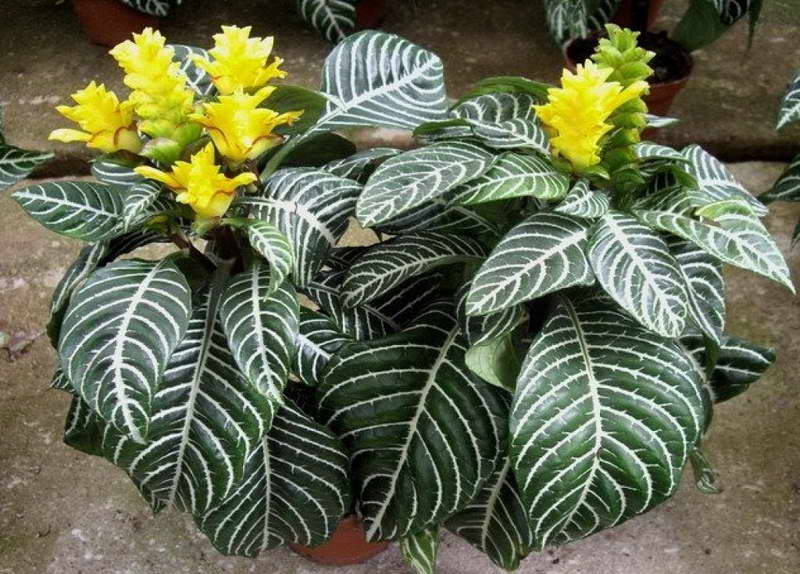



 10 beautiful annuals that bloom all summer
10 beautiful annuals that bloom all summer Sow in the ground, without seedlings: 10 beautiful and unpretentious flowers
Sow in the ground, without seedlings: 10 beautiful and unpretentious flowers Platicodon planting and outdoor care
Platicodon planting and outdoor care Hosta - planting and care in the open ground in the Urals
Hosta - planting and care in the open ground in the Urals